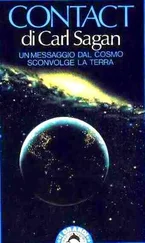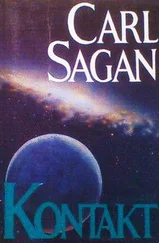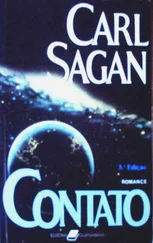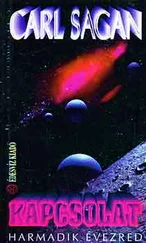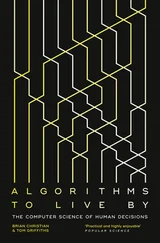Carl Sagan - Broca's Brain - The Romance of Science
Здесь есть возможность читать онлайн «Carl Sagan - Broca's Brain - The Romance of Science» весь текст электронной книги совершенно бесплатно (целиком полную версию без сокращений). В некоторых случаях можно слушать аудио, скачать через торрент в формате fb2 и присутствует краткое содержание. Жанр: Физика, на английском языке. Описание произведения, (предисловие) а так же отзывы посетителей доступны на портале библиотеки ЛибКат.
- Название:Broca's Brain: The Romance of Science
- Автор:
- Жанр:
- Год:неизвестен
- ISBN:нет данных
- Рейтинг книги:3 / 5. Голосов: 1
-
Избранное:Добавить в избранное
- Отзывы:
-
Ваша оценка:
- 60
- 1
- 2
- 3
- 4
- 5
Broca's Brain: The Romance of Science: краткое содержание, описание и аннотация
Предлагаем к чтению аннотацию, описание, краткое содержание или предисловие (зависит от того, что написал сам автор книги «Broca's Brain: The Romance of Science»). Если вы не нашли необходимую информацию о книге — напишите в комментариях, мы постараемся отыскать её.
Broca's Brain: The Romance of Science — читать онлайн бесплатно полную книгу (весь текст) целиком
Ниже представлен текст книги, разбитый по страницам. Система сохранения места последней прочитанной страницы, позволяет с удобством читать онлайн бесплатно книгу «Broca's Brain: The Romance of Science», без необходимости каждый раз заново искать на чём Вы остановились. Поставьте закладку, и сможете в любой момент перейти на страницу, на которой закончили чтение.
Интервал:
Закладка:
Our profound ignorance of whether other planets harbor life may end within this century. Plans are now afoot for the chemical and biological examination of many of these candidate worlds. The first step was the American Viking missions, which landed two sophisticated automatic laboratories on Mars in the summer of 1976, almost three hundred years to the month of Leeuwenhoek’s discovery of hay infusoria. Viking found no curious structures nearby (or sauntering by) which were top-heavy, and no detectable organic molecules. Of three experiments in microbial metabolism, two in both landing sites repeatedly gave what seemed to be positive results. The implications are still under vigorous debate. In addition, we must remember that the two Viking landers examined closely, even with photography, less than one millionth of the surface area of the planet. More observations-particularly with more sophisticated instrumentation (including microscopes) and with roving vehicles-are needed. But despite the ambiguous nature of the Viking results, these missions represent the first time in the history of the human species that another world has been seriously examined for life.
In the following decades it is likely that there will be buoyant probes into the atmospheres of Venus, Jupiter and Saturn, and landers on Titan, as well as more detailed studies of the surface of Mars. A new age of planetary exploration and exobiology dawned in the seventh decade of the twentieth century. We live in a time of adventure and high intellectual excitement; but also-as the step from Leeuwenhoek to Pasteur shows-in the midst of an endeavor which promises great practical benefits.
CHAPTER 13

On Titan, warmed by a hydrogen blanket,
ice-ribbed volcanoes jet ammonia
dredged out of a glacial heart. Liquid
and frozen assets uphold an empire
bigger than Mercury, and even a little
like primitive Earth: asphalt plains and hot
mineral ponds. But
how I’d like to take the waters of Titan, under
that fume-ridden sky,
where the land’s blurred by cherry mist
and high above, like floating wombs,
clouds
tower and swarm, raining down primeval
bisque, while life waits in the wings.
DIANE ACKERMAN,
The Planets (New York, Morrow, 1976)
TITAN IS NOT a household word, or world. We do not usually think of it when we run through a list of familiar objects in the solar system. But in the last few years this satellite of Saturn has emerged as a place of extraordinary interest and prime significance for future exploration. Our most recent studies of Titan have revealed that it has an atmosphere more like the Earth’s-at least in terms of density-than any other object in the solar system. This fact alone gives it new significance as the exploration of other worlds begins in earnest.
Besides being the largest satellite of Saturn, Titan is also, according to recent work by Joseph Veverka, James Elliot and others at Cornell University, the largest satellite in the solar system-about 5,800 kilometers (3,600 miles) in diameter. Titan is larger than Mercury and nearly as large as Mars. And yet there it is in orbit around Saturn.
We might obtain some clues about the nature of Titan by examining the two major worlds in the outer solar system-Jupiter and Saturn. Both have a general reddish or brownish coloration. That is, the upper layer of clouds that we see from the Earth has this hue primarily. Something in the atmosphere and clouds of these planets is strongly absorbing blue and ultraviolet light, so that the light that is reflected back to us is primarily red. The outer solar system, in fact, has a number of objects that are remarkably red. Although we have no color photographs of Titan because it is 800 million miles away and has an angular size smaller than the Galilean satellites of Jupiter, photoelectric studies reveal that it is, in fact, very red. Astronomers who thought about the problem once believed that Titan was red for the same reason that Mars is red: a rusty surface. But then the reason for Titan’s red color would be different from the reason for Jupiter’s and Saturn’s, because we do not see to a solid surface on those planets.
In 1944 Gerard Kuiper detected spectroscopically an atmosphere of methane around Titan-the first satellite found to have an atmosphere. Since then, the methane observations have been confirmed, and at least moderately suggestive evidence for the presence of molecular hydrogen has been provided by Lawrence Trafton of the University of Texas.
Since we know the amount of gas necessary to produce the observed spectral absorption features, and we know from its mass and radius the surface gravity of Titan, we can deduce the minimum atmospheric pressure. We find it is something like 10 millibars, about one percent of the Earth’s atmospheric pressure-a pressure that exceeds that of Mars. Titan has the most Earth-like atmospheric pressure in the solar system.
Not only the best, but the only visual telescopic observations of Titan have been made by Audouin Dollfus at the Meudon Observatory in France. These are hand drawings done at the telescope during moments of atmospheric steadiness. From the variable patches that he observed, Dollfus concluded that things are happening on Titan that do not correlate with the satellite’s rotation period. (Titan is thought always to face Saturn, as our Moon does the Earth.) Dollfus guessed that there might be clouds, at least of a patchy sort, on Titan.
Our knowledge of Titan has made a number of substantial quantum jumps forward in recent years. Astronomers have successfully obtained the polarization curve of small objects. The idea is that initially unpolarized sunlight falls on Titan, say, and is polarized on reflection. The polarization is detected by a device similar in principle to, but more sophisticated and sensitive than, “polaroid” sunglasses. The amount of polarization is measured as Titan goes through a small range of phases-between “full” Titan and slightly “gibbous” Titan. The resulting polarization curve, when compared to laboratory polarization curves, gives information on the size and composition of the material responsible for the polarization.
The first polarization observations of Titan, made by Joseph Veverka, indicated that the sunlight reflected back from Titan is most likely reflected off clouds and not off a solid surface. Apparently there is on Titan a surface and a lower atmosphere that we do not see; an opaque cloud deck and an overlying atmosphere, both of which we do see; and an occasional patchy cloud above that. Since Titan appears red, and we view it at the cloud deck, there must, according to this argument, be red clouds on Titan.
Additional support for this concept comes from the extremely low amount of ultraviolet light reflected from Titan, as measured by the Orbiting Astronomical Observatory. The only way to keep Titan’s ultraviolet brightness small is to have the ultraviolet absorbing stuff high up in the atmosphere. Otherwise Rayleigh scattering by the atmospheric molecules themselves would make Titan bright in the ultraviolet. (Rayleigh scattering is the preferential scattering of blue rather than red light, which is responsible for blue skies on Earth.)
But material that absorbs in the ultraviolet and violet appears red in reflected light. So there are two separate lines of evidence (or three, if we believe the hand drawings) for an extensive cloud cover on Titan. What do we mean by extensive? More than 90 percent of Titan must be cloaked in clouds to match the polarization data. Titan seems to be covered by dense red clouds.
Читать дальшеИнтервал:
Закладка:
Похожие книги на «Broca's Brain: The Romance of Science»
Представляем Вашему вниманию похожие книги на «Broca's Brain: The Romance of Science» списком для выбора. Мы отобрали схожую по названию и смыслу литературу в надежде предоставить читателям больше вариантов отыскать новые, интересные, ещё непрочитанные произведения.
Обсуждение, отзывы о книге «Broca's Brain: The Romance of Science» и просто собственные мнения читателей. Оставьте ваши комментарии, напишите, что Вы думаете о произведении, его смысле или главных героях. Укажите что конкретно понравилось, а что нет, и почему Вы так считаете.



